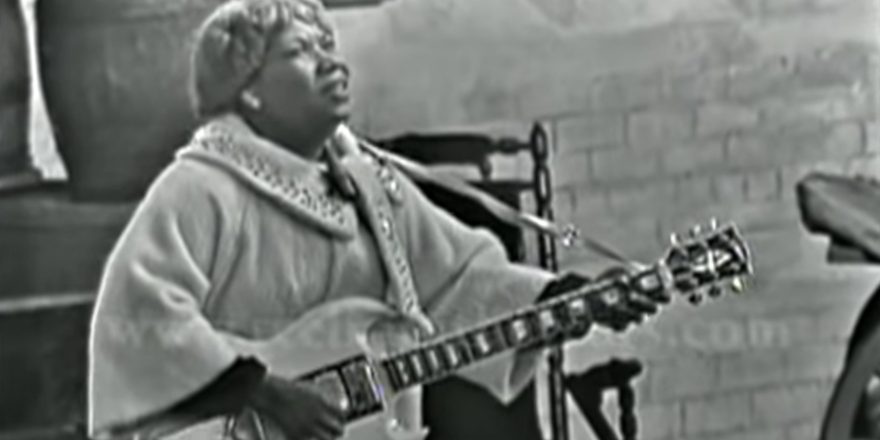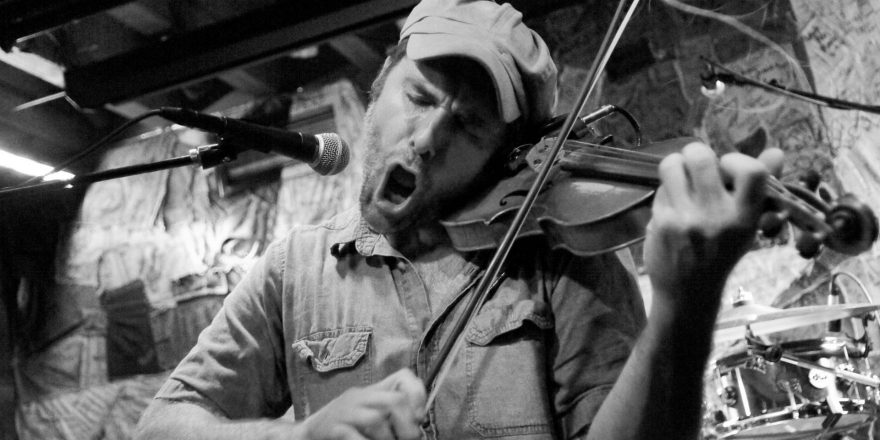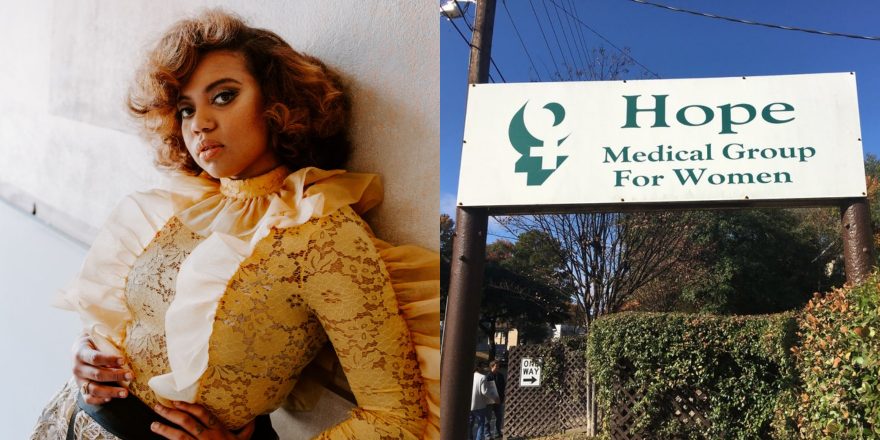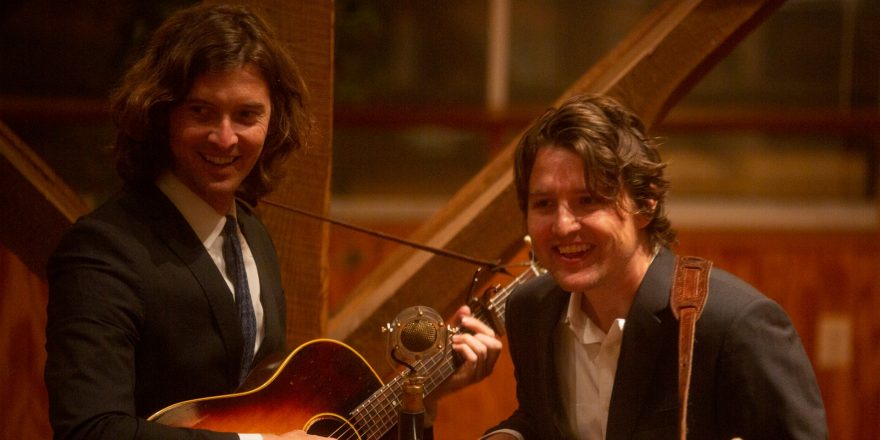If you’ve found yourself interacting with music in different ways than you used to, you’re not alone. Maybe you’re a little more likely to stream music from a new artist, but a little less likely to give that artist more than a cursory listen before moving on. Maybe you’re less likely to listen to a whole album and more likely to bounce from song to song on a playlist. Technology has a powerful influence on our relationship with music, and it always has. Over the last century technology has changed our relationship with music to such an extent that we have gradually lost touch with this fundamental art, and in ways that are worth reconsidering.
Before the advent of phonographs the easiest (and often only) way to hear music was to perform it. Giant music publishers like Sony/BMG and Warner Chappell are the corporate great-grandchildren of companies that sold sheet music intended for middle-class parlors. The sheet music for Stephen Foster’s minstrel song, “Oh! Susanna,” sold 100,000 copies the year it was published, in an era when no previous song had sold more than 5,000.
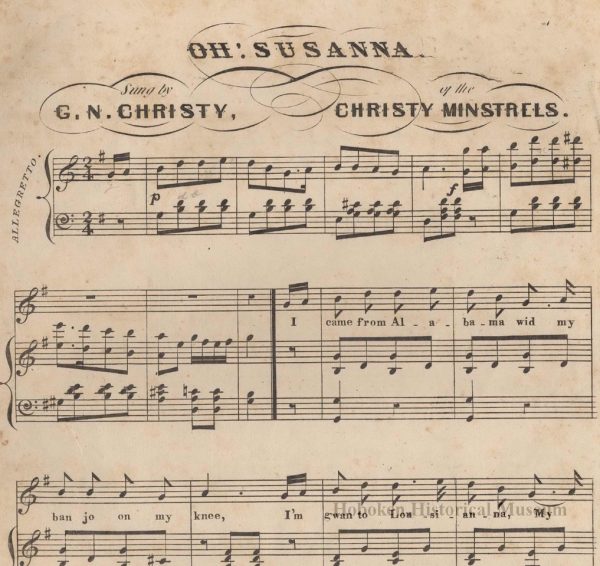
Phonographs slowly nudged the piano over, and selling records became big business. And just as we experience but don’t entirely understand the ramifications of technology’s influence today, how phonographs would change music wasn’t immediately clear. For example, in the early days of recorded music it was often assumed that live performances would undermine record sales, and many record contracts then contained clauses prohibiting artists from performing during the launch of a new single. Gradually record labels realized that live performances actually enhanced record sales, and contracts were duly updated to require live performances around the launch of new recordings.
Microphone and amplification technology shaped music, too. Belters like Al Jolson often sang in the high, reedy register that carried to the back of the theater. But in the 1930s newly developed electric microphones allowed crooners like Bing Crosby and Whispering Jack Smith to employ a vastly greater dynamic range. Singers also began using breaths, sighs, and small chromatic inflections, and gradually this led to a more “natural” singing style.
As a professional class of musicians bloomed and thrived economically, artists competed to sell more tickets in bigger venues by escalating the spectacle of their live performances. In 1950 the electric guitar-wielding gospel singer Sister Rosetta Tharpe signed a contract to find a husband before next year’s planned wedding concert. She did, and was duly married in front of 25,000 paying fans, who were treated to fireworks and a musical performance later packaged and released as two records. Over the years concerts would add light shows, dry ice, lasers, jumbotron screens, and earth-shakingly powerful speakers.
These technologies shaped music, but they also shaped how we increasingly engaged with music as spectators. Radio, television, and computer screens played an assistive role in this, and phones connected to individual sets of earphones are a force multiplier on our isolation.
As a result, the pianos that remain in our homes are often more decorative than useful. This is a great shame, as music has extraordinary abilities to bring humans together — it’s no coincidence that churches and affinity groups use music to quite literally synchronize us. There is an ineffable magic to listening to music together, to hearing the same melodies in the same room, to singing the same resonant words, and, at least for a moment, feeling the bonds of musical kinship. That this is accessible to many of us — at least in the secular world — only through commercial outlets should be understood as a great cultural loss.
The practice of music has palpably intrinsic value, unmoored from external reward or approbation. It’s extraordinary that many people will publicly attempt a complicated and sometimes grueling Asian stretching regimen, but will firmly maintain that they “can’t sing.” Sadly, this can be a self-fulfilling prophecy—like any sport or activity, proficiency requires practice.
There is so much strange cultural baggage around music. My own musical area of interest, songwriting, harbors alarmingly contradictory impulses. Truly anyone can write a song, and you certainly don’t need to know how to play an instrument—parents like me can attest that inventing spur-of-the-moment classics like “It’s Time to Brush Your Teeth (Brush Your Teeth, Brush Your Teeth)” comes naturally. Yet songwriting seems to be at the bottom of the barrel, arts-wise, and rarely features in early education the way painting or poetry commonly do. Even in advanced education, songwriting programs are rare relative to creative writing, “fine” arts, or even classical or jazz music. Why is this? Measured culturally or economically songwriting is a giant art, moving minds and bodies at every moment of every day, and earning billions annually.
Happily, there are opposing current trends in music. House shows, where musicians like me perform in a living room for thirty or so people, are increasingly common (and an increasing proportion of mid-level songwriters’ touring routes). And YouTube how-to tutorials can teach anyone with a computer Taylor Swift chords and Robert Johnson licks alike.
In this age of bitter partisanship, Americans need to actively and consciously promote cultural coherence — reclaiming amateur music could play a vital part in that effort. After all, what better way is there to harmonize and synchronize different people?
So the next time you feel disconnected, the next time you catch yourself awaiting the bleak consolation of a social media notification, think about inviting some friends and neighbors to sing with you. You don’t need an instrument, and you don’t need to be a professional-grade singer. You just need a song, and want to sing it, together.



